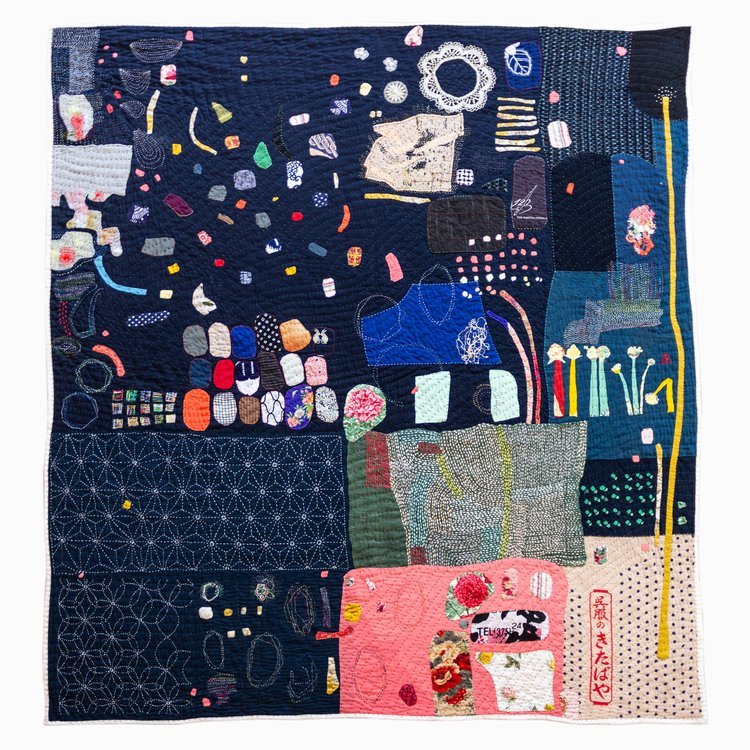Heidi Parkes - Framed Quilts



Heidi Parkes - Framed Quilts
Sunday, April 13, 2025
10am-4pm
Class Fee: $175/ WMQFA Members (with member code); $200/Non Members
Workshop Description:
Quilts can squish into backpacks and unfurl into art galleries, but sometimes there’s a thrill in stretching them taut, just like a painting. This workshop will teach you to use a wooden frame and staples to display your quilt ‘stretched canvas style.’ You will also get an introduction to several exciting quiltmaking techniques:
Layered quilts: have a transparent layer on top, revealing fabric and thread beneath
Patchwork: involves ‘piecing’ small segments of fabric together to expand into a full-sized quilt top
‘Quilt as you go’: combines the acts of ‘piecing’ and ‘quilting’ (fusing your quilt top and batting/insides) into one efficient and unique-looking quilt
Embroidery: Maybe you want to skip the quilting phase and just frame an embroidery
Freeform Applique: Working with a base fabric, you can apply more fabric on top with raw edges or turned edges to create a complex composition
Students will receive access to Heidi’s on-demand version of this class in advance of our workshop, so they can practice ahead, or refresh their memories after we gather in person.**
In addition to standard quilting supplies, students will need a couple wooden frames, staples, and a staple gun in class.
**If a student needs a refund after they have received the PDF for Framed Quilts, they will still be charged the $85 value of the pdf content.
Supplies Checklist:
You can see further details about all of my favorite sewing supplies on my website. For this class, you’ll need:
A staple gun and staples, any size staple from 1/4” to 5/8” will work
A wooden frame, or frames, 6x6”, 5x7”, 4x6”, 3x8”; any small-ish frame will work. A wooden frame with canvas stretched on it is a great option, and there are some examples on my amazon shop page. (Please leave the canvas in place if you’re going this route.)
Consider finding a frame at a thrift store!! They’re inexpensive, and come in a lot of great sizes. If you go this route, please check that you can get a staple into the back of your frame.
Fabric for your quilt top:
Natural fibers (especially cotton) are the easiest to work with, but I’m very open to experimental options too! A variety of scraps will work, and it can also be nice to have some cuts of fabric that match the size of your frame.
Thread scraps and transparent fabric for our ‘layered quilt’ (open weave fabric, a repurposed curtain, silk organza or chiffon, etc. If you can see your hand through it, it’ll work!)
Fabric to ‘frame’ your quilt: This fabric will create a border around your quilt, and will look like a frame. A quarter yard should be enough for one 6x6” frame. We will cut this fabric to fit your unique frame and quilt in class together, but a strip width of 3” or 4” will work in most cases.
Thread: My favorite thread is DMC Pearl Cotton size 8, but other options will work too.
A sewing needle that works with your thread: I like the Dritz Milliners multipack.
Scissors
A pushing thimble, to protect your fingers while sewing (I LOVE the Clover Protect and Grip Thimble, which is in my amazon shop)
A pulling thimble or gripper (I LOVE the Little House Needle Gripper Silicone Thimble, which I purchase from Snuggly Monkey. Use this $5 discount code from me.) You can also use a needle puller or rubber gripper (I like using a square of Dycem Non-Slip)
Pins (straight, applique, safety, any will work)
A small piece of quilt batting, we’ll cut it to be the same size as your frame. You may want one piece for each technique. I like cotton batting.
About 4 safety pins for basting
A Hera marker, or pencil
Additional Optional Supplies:
A cutting mat, clear ruler, and rotary cutter
A needle threader
Embroidery hoops, 4”, 6”, and/or 10”
Photo credit: Clare Britt
About Heidi Parkes:
Before Heidi Parkes was born in Chicago, IL in 1982, her grandmother organized a collaborative family quilt to commemorate her birth. Based in Milwaukee, Wisconsin since 2015, her quilting and mending celebrate the hand, and her works tug at memories, shared experience, materiality, and embodiment. Engaging in the worlds of art, quilts, mending, and social media, Heidi is an advocate for the domestic realms, slow stitching, and mindfulness. Find her on Instagram and YouTube. She is the 2024 Pfister Hotel Artist in Residence, and a 2005 graduate from The School of the Art Institute of Chicago.
Heidi’s SOFT MAGIC exhibition will be at the WMQFA from March 6th June 8th 2025.
See this 3-minute Studio Visit on YouTube: https://youtu.be/s3Q-XxWrcYQ










